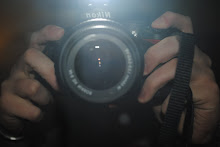
For assignment 2A we were to read Roland Barthes' "Rhetoric of the Image". I'm not going to lie, but on first glance it was probably the hardest, most boring thing I have ever read. Not due to the physical content but more so because of the ridiculously over complicated language used.
Eventually I simply had to find a summary of the text http://mh.cla.umn.edu/ebibld4.html. On reading this thing started to become a bit clearer as the 3 main points of the linguistic message, coded image and non-coded image started to gain some meaning. Here is, as I currently understand it, what Barthes is trying too put across.
When looking at an image there are 3 things that me must pay attention too, if we are to understand the image correctly:
The Linguistic Message - this is the text in the image and how it relates to the feel of the image. In the example given the text on the pasta put across the companies name and the fact that it was meant to be Italian from its appearance.
The Coded Iconic Message - These are the things that we assume from the image (its like reading a code!), such as if there's some some bright attractive fruit or veg then we assume that its ripe even though it doesn't explicitly say "this tomato is ripe". They wouldn't write this as it would imply that they were from it appearance.
The Non Coded Iconic Message - This is simply what you see, if there's a bag of pasta there, then there's a bag of pasta there. Simply there is no code, you don't have to read into the image.
This has lots implication for Graphic Design as the main essence of the subject is text and imagery. Images are defined through the eye of the beholder, and if an image isn't presented correctly then a completely different message could be conveyed. The use of typography can be key to the placing of certain products in certain categories e.g. pasta in an Italian style font. If this was presented using say a font from a western then it could mean something completely different than Italian pasta.
This is currently what I think that this extract means however I will return after task 2B+C and I will have re read the passage to see how it implicates Graphic Design, that is if I haven't blown my brains out from the over use of unnecessary language.....just kidding.....but maybe not.


do u not think that we are in a section of the art comunite to create and sell happyness and satisfaction? as we are creating and image/text for a customer and this is what they want to feel also? i belive this could be done honestly and dishonestly.
ReplyDeleteAny thoughts? lol x